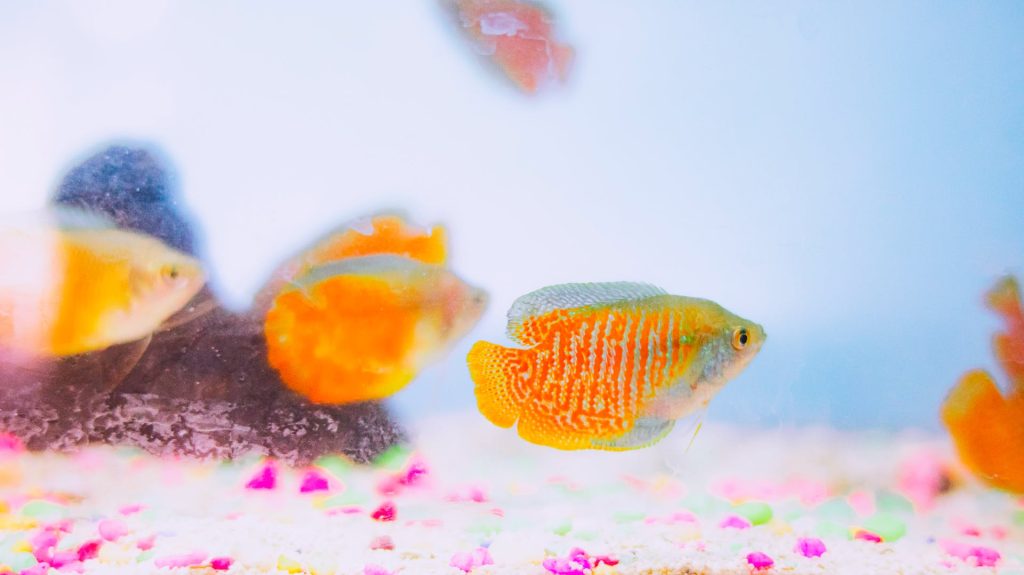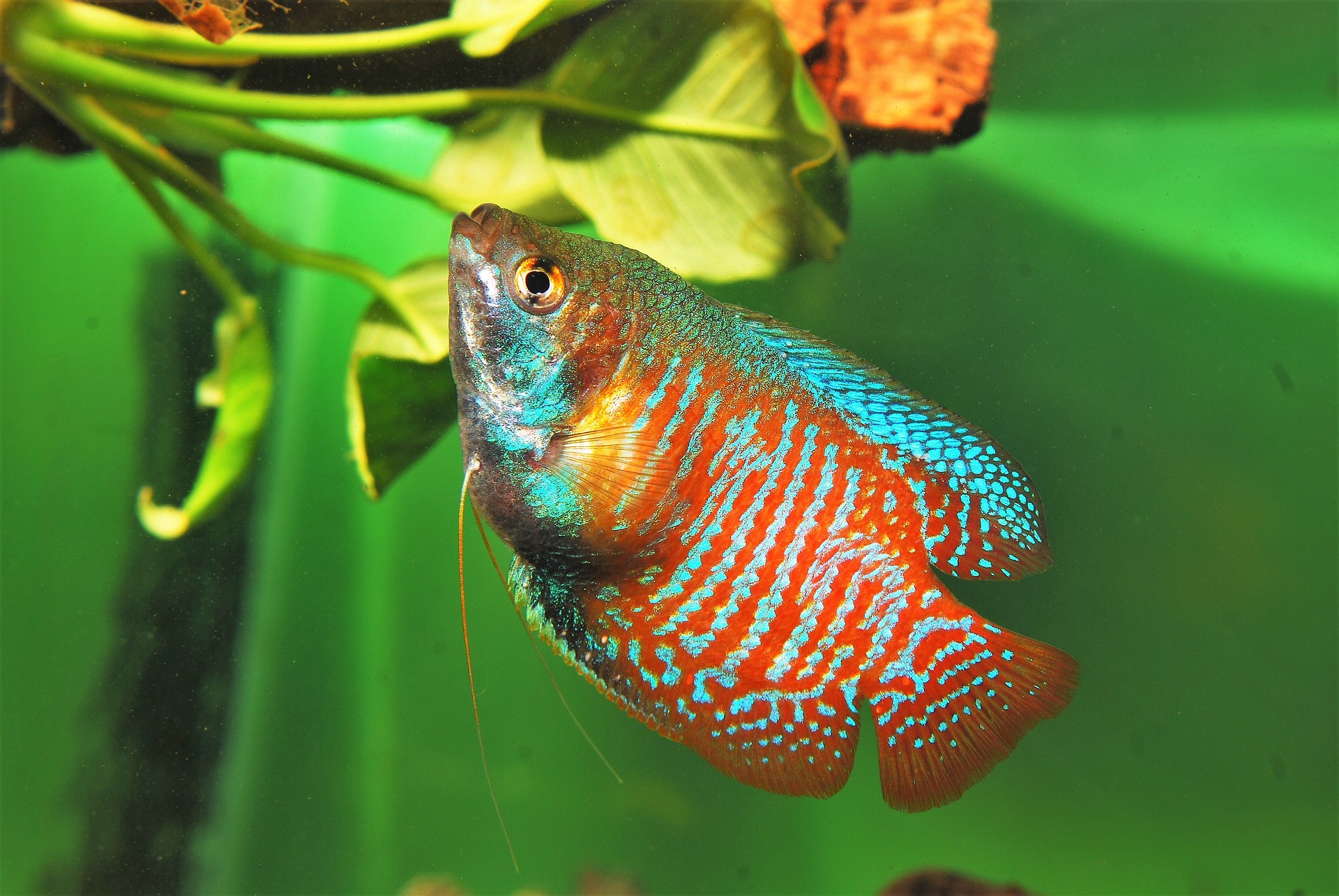Last Updated on February 18, 2024 by Dustin
Imagine a dazzling spectacle: jewel-toned fish gliding gracefully through a miniature underwater jungle, their iridescent scales catching the dappled sunlight. These captivating creatures, dwarf gouramis, bring life and beauty to our aquariums. But beyond their mesmerizing appearance lies a deeper question: what makes their aquatic environment truly fulfilling? As fellow aquascapers, we at Home Aquarium Supplies understand the desire to create a haven where our finned friends not only survive but thrive. So, delve into this article with us, and uncover the secrets to crafting the perfect dwarf gourami paradise.
Quick Stats on Dwarf Gouramis:
- Size: 2-3 inches (5-8 cm)
- Water temperature: 75-80°F (24-27°C)
- pH: 6.0-7.5
- Diet: Omnivorous
- Minimum tank size: 10 gallons (38 liters) for a single dwarf gourami
Beyond Basic Needs: Crafting a Dwarf Gourami Dreamland
While providing clean water, proper temperature, and balanced nutrition is crucial, creating a truly enriching environment goes beyond mere necessities. We’ve learned through study and experience that to unlock the vibrant personalities and natural behaviors of your dwarf gouramis, you should consider these essential elements:
- A Spacious Haven: Cramped quarters can lead to stress and aggression. Provide a tank size appropriate for the number of gouramis, allowing ample room for swimming and exploration.
- A Lush Jungle: Live plants offer not only aesthetic appeal but also hiding spots, grazing opportunities, and improved water quality. Opt for hardy, low-light varieties suitable for your tank conditions.
- Gentle Flow: While gouramis breathe air, they still appreciate gentle water movement. Choose a filter that creates a current suitable for their delicate fins, mimicking the gentle flow of their natural habitat.
- Varied Enrichment: Offer hiding places like caves and driftwood, provide floating toys for stimulation, and introduce enrichment activities like feeding live food (bloodworms, brine shrimp) occasionally.
Remember, every gourami is an individual with unique preferences. Observe their behavior and adjust their environment accordingly. Resources like Home Aquarium Supplies offer a wealth of information on providing care for diverse fish species, including in-depth guides on dwarf gouramis. Our expertise can help you tailor your setup to perfectly suit your shimmering companions.

In Conclusion: A World of Wonder Awaits
By crafting a tank that caters to their physical and emotional needs, you can witness your dwarf gouramis truly come alive. From exploring lush greenery to engaging in playful antics, their vibrant personalities will shine through. Now, tell me, what other questions do you have about creating the perfect underwater paradise for your captivating dwarf gouramis? Here are some common Q&As.
Dwarf Gourami Q&A:
Q. Do gouramis need a heater?
A. Yes, they are tropical fish and thrive in temperatures between 75-80°F (24-27°C).
Q. What tank mates are good for gouramis?
A. Peaceful community fish like rasboras, tetras, or corydoras are suitable choices. Avoid large, aggressive fish.
Q. How often should I clean the tank?
A.Weekly partial water changes (20-30%) and regular gravel vacuuming are recommended to maintain good water quality.
Q. What do I feed my gouramis?
A. Offer a varied diet of high-quality pellets, flakes, frozen foods, and occasional treats like bloodworms or brine shrimp.
